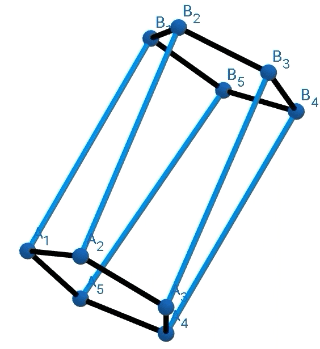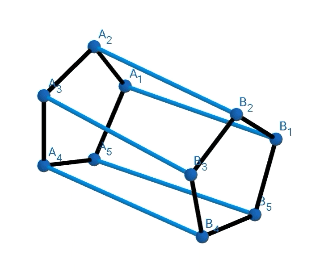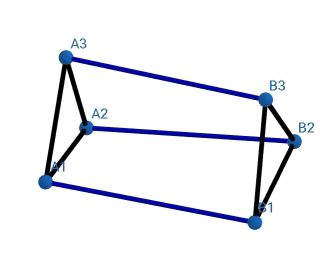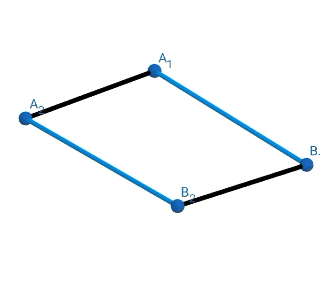Defining the process of twisting a prism : Twisting the top face of a prism with no walls.
The prism can show these two behaviors while getting twisted :
- An ideal prism(side length not constant) will simply have it's face twisted with no other change,

- A real scenario where the side length is constant and hence there is a slight compression perpendicular to the top face,

For this post I am concerned about the second point i.e when the side length is constant.
Some more examples I constructed-


I am providing the link of a google drive folder where I have uploaded the geogebra files so you guys can experiment with them.
As I was constructing these, I noticed that the length all the figures were getting compressed was equal (the polygons had equal radii, and the side length was also equal). I did it only till Pentagon
- so I hypothesize that it will be equal for every regular polygon given the radius and the side length are equal. Is my hypothesis correct? If yes how to prove it?
I noticed another thing- every 180° rotation resulted in the first intersection for every polygon prism not depending on the radius/side length. I tried thinking a lot about it but wasn't able to visualize it,
- why does the first intersection happens after rotating 180°?
My last but not the least question:
In the process of construction, I found out the locus of the vertices : taking the example of a square prism the vertex $\text{B}_1$ follows : $$x=\sqrt{l^2 - (r\cos (\phi + \pi /2)-h)^2 - (r\sin (\phi + \pi /2)-k)^2}-m \\ y=r\cos(\phi +\pi /2) \\ z=r\sin(\phi + \pi /2) \\ \text{the prism is along x axis}\\ \text{ $(m,h,k)$ are the $x,y,z$ coordinates of $ \text{A}_1 $respectively} \\ \text{ $\phi$ is the angle by which the top face is getting rotated.} \\ \text{ $r,l$ are the radius and length of the prism respectively.}$$ Note that I have added a + $\pi /2$ in the angle to denote the initial coordinate of the vertex.
Thank you for reading my long question, I will appreciate all answers/comments :)
from Hot Weekly Questions - Mathematics Stack Exchange
Pj30


Post a Comment